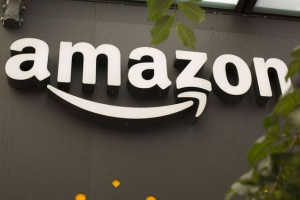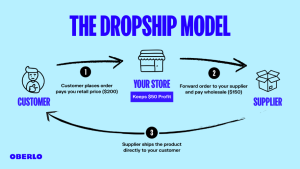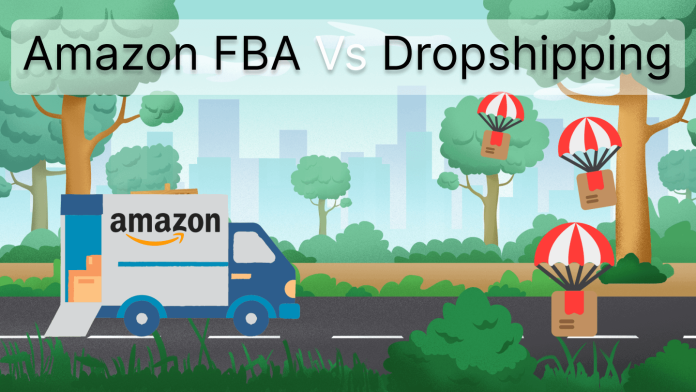Amazon FBA VS Dropshipping
Amazon FBA and dropshipping are two distinct e-commerce models that have gained immense popularity in recent years. Amazon FBA, short for Fulfillment by Amazon, involves selling products through Amazon’s platform and utilizing its extensive fulfillment network. Sellers send their products to Amazon’s warehouses, and from there, Amazon takes charge of storage, packing, and shipping when an order is placed. On the other hand, dropshipping is a retail fulfillment method where sellers don’t hold any inventory. When a product is ordered, it’s purchased from a third-party supplier who directly ships it to the customer. Both models offer unique advantages and considerations, making them suitable for different business approaches and goals.
Understanding Amazon FBA
Amazon FBA involves selling products through Amazon, utilizing its vast fulfillment network. Sellers send their products to Amazon’s warehouses, and Amazon takes care of storage, packing, and shipping. Also, read about Hyperwrite AI
Pros of Amazon FBA
Effortless Fulfillment: Amazon handles order fulfillment, saving you time and effort.
Prime Eligibility: FBA products are eligible for Prime, attracting more customers.
Customer Service: Amazon handles customer service and returns.
Cons of Amazon FBA
Fees and Costs: Fulfillment and storage fees can eat into your profits.
Less Control: You relinquish control over certain aspects of the fulfillment process.
Understanding Dropshipping
Dropshipping involves selling products without holding any inventory. When a product is ordered, it’s purchased from a third party who ships it directly to the customer.
Pros of Dropshipping
Low Initial Investment: You don’t need to invest heavily in inventory.
Flexibility: Easy to scale and expand without worrying about warehousing.
Cons of Dropshipping
Thin Margins: Profits can be slim due to high competition and low product prices.
Quality Control: Limited control over product quality and shipping times.
Comparison: Amazon FBA vs Dropshipping
Business Model
Amazon FBA involves a more traditional e-commerce model, where you purchase or manufacture products, send them to Amazon’s fulfillment center, and they handle the rest. Dropshipping, on the other hand, is a retail fulfillment method where a store doesn’t keep the products it sells in stock. Instead, when a store sells a product, it purchases the item from a third party and has it shipped directly to the customer.
Initial Investment
Amazon FBA usually requires a higher initial investment due to the need to purchase inventory upfront. You’ll also need to consider storage fees at Amazon’s fulfillment centers. Dropshipping, on the other hand, requires minimal upfront investment as you don’t need to purchase inventory.
Inventory Management
With Amazon FBA, you’ll need to manage and monitor your inventory levels at Amazon’s warehouses to ensure you have enough stock. In dropshipping, you don’t need to worry about managing and investing in inventory, which can be a significant advantage.
Shipping and Delivery
In Amazon FBA, shipping is handled by Amazon’s extensive network, ensuring faster and more reliable delivery, which is crucial for customer satisfaction. In dropshipping, shipping times and reliability can vary based on the suppliers you work with. For interesting information visit our website techwhizpro.com
Which One Is Right for You?
The decision between Amazon FBA and dropshipping depends on your unique circumstances and business objectives. Here are some considerations to help guide your choice:
Amazon FBA
If you have the capital and are looking for a more hands-on approach with a strong focus on customer service, Amazon FBA might be the right fit for you. This model offers a structured and established fulfillment process, ensuring efficient order handling and delivery. It’s ideal for those willing to invest in inventory upfront and benefit from Amazon’s extensive customer base.

Dropshipping
On the other hand, if you have limited funds and prefer a low-risk, flexible business model, dropshipping could be the better fit. Dropshipping requires minimal upfront investment as you don’t need to purchase or hold inventory. It offers the freedom to experiment with various products and niches without the financial commitment of stocking products. Dropshipping is scalable and allows you to expand your product range easily.
Consider your budget, time commitment, risk tolerance, and long-term goals when making this decision. Whichever option you choose, thorough research and a clear understanding of your business strategy will be key to success.
Tips for Success
Market Research
Before diving into either Amazon FBA or dropshipping, conducting thorough market research is crucial. Understand your target audience, their preferences, and the demand for specific products. It’s essential to identify trends, analyze competitors, and pinpoint gaps in the market. This research will serve as a guide, helping you choose the right niche for your business.
Choose Reliable Suppliers
If you choose the dropshipping model, the reliability of your suppliers is paramount. Establish strong relationships with reputable suppliers who can consistently deliver products on time while maintaining high-quality standards. Reliable suppliers ensure that your customers receive their orders in a timely manner, fostering higher satisfaction and encouraging repeat business.
Optimize Your Listings
Regardless of whether you opt for Amazon FBA or dropshipping, optimizing your product listings is crucial for success. Incorporate relevant keywords in titles, descriptions, and tags to enhance visibility on e-commerce platforms. Additionally, high-quality images and compelling product descriptions can significantly impact sales. Ensure that your listings are accurate, informative, and appealing to potential customers.
Focus on Customer Service
Exceptional customer service is a critical factor for success in both Amazon FBA and dropshipping. Prioritize customer satisfaction by promptly addressing inquiries, efficiently handling returns, and professionally resolving any issues that may arise. Positive customer experiences lead to favorable reviews and increased trust in your brand.
Stay Informed and Adapt
The e-commerce landscape is in a constant state of evolution. Staying updated with industry trends, being aware of changes in algorithms, and understanding shifts in consumer behavior are essential. Adapt your strategies accordingly to remain competitive and relevant in the market. Embrace new technologies and tools that can streamline your operations and enhance your business’s efficiency.

Conclusion
The choice between Amazon FBA and dropshipping hinges on your business goals, budget, and operational preferences. Amazon FBA offers a streamlined and hands-off approach to order fulfillment, making it ideal for those with capital and a focus on customer service. On the other hand, dropshipping requires minimal upfront investment and provides flexibility, making it suitable for those with limited funds and a desire for a low-risk model.
To succeed in either model, thorough market research is fundamental for understanding your audience, product demand, and competition. Choosing reliable suppliers or managing your inventory efficiently ensures timely delivery and maintains high-quality standards, fostering customer satisfaction and loyalty. Optimizing product listings, offering exceptional customer service, and staying informed about industry trends are key strategies to enhance visibility, build trust, and adapt to the evolving e-commerce landscape.
FAQs
Q1: Which model has higher profit potential, Amazon FBA, or dropshipping?
Profit potential can vary based on several factors including your niche, marketing strategy, and operational efficiency.
Q2: Are there any geographic restrictions for Amazon FBA or dropshipping?
Both models generally allow for international operations, but specifics may vary based on regions and regulations.
Q3: Can I switch from Amazon FBA to dropshipping or vice versa?
Yes, you can transition between the two models, but it requires careful planning and consideration of your business needs.
Q4: Do I need a business license to operate in either of these models?
It’s advisable to check local regulations and obtain any necessary licenses or permits for operating an e-commerce business.
Q5: How can I effectively manage customer service in both models?
In Amazon FBA, leverage Amazon’s customer service capabilities. In dropshipping, provide excellent customer service by promptly addressing inquiries and concerns.














